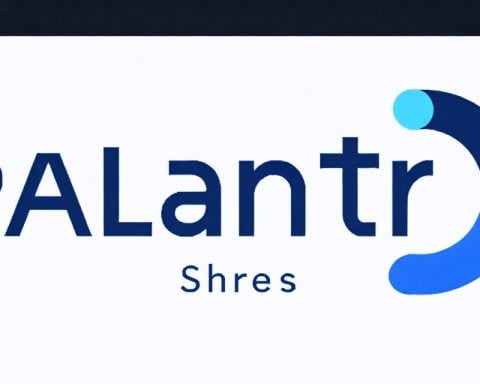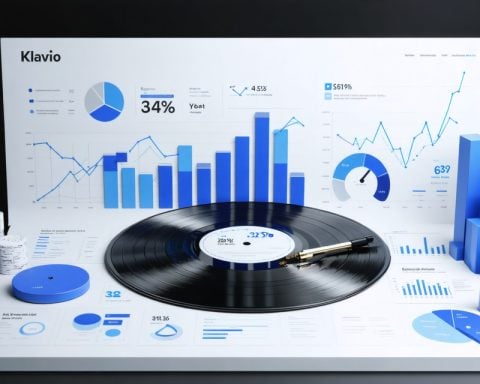- The AI revolution is intensifying, with nations and companies competing in a technological race driven by sophisticated AI models.
- The U.S. is investing $500 billion in the Stargate project, expanding data center capacity to meet AI demands.
- South Korea plans to build a $35 billion data center, aiming for 3 gigawatts of power to outpace Western counterparts.
- AI models could consume over 5 gigawatts by 2030, necessitating innovation and expansion in data centers to handle energy needs.
- Industry shifts require agility; Axon Enterprise’s split with Flock Safety highlights the sector’s volatility.
- Elon Musk’s $97.4 billion bid for OpenAI emphasizes the high stakes and strategic maneuvers in AI investment.
- Success in the AI landscape requires bold investments and adaptability to thrive amidst rapid changes.
The rumble of the AI revolution grows louder as nations and companies scramble to stake their claim in this technological gold rush. With AI models becoming increasingly sophisticated, the demand for robust infrastructure surges, driving a whirlwind of investments worldwide. The United States’ recent $500 billion Stargate project, aimed at beefing up data center capacity, showcases the escalating stakes. Now, South Korea is jumping into the race, announcing plans for a colossal data center, worth $35 billion, forecasted to deliver 3 gigawatts of power. This endeavor would dwarf those of its Western counterparts, marking a bold step in the quest for AI dominance.
Against this backdrop, industry giants and fledgling innovators alike must grapple with the immense power demands these AI advancements require. It’s projected that AI models, by 2030, may consume more than 5 gigawatts of electricity. For data centers, this means an urgent need to innovate and expand, tackling the escalating energy needs head-on.
Meanwhile, as global entities pump billions into AI, internal dramas at companies like Axon Enterprise mirror the turbulent energy of the sector. A recent stock downgrade, prompted by its split with partner Flock Safety, underscores the volatile nature of AI-driven ventures. Rapid-fire shifts in alliances and strategies signal that agility and innovation are critical to staying afloat in these uncertain waters.
Elon Musk’s staggering $97.4 billion bid for OpenAI reveals just how high the stakes are. Even though the offer met resistance, it illustrates the lengths to which investors will go to ensure their influence in AI’s unfolding saga.
In this era of electrifying change, the message is clear: AI’s ascent demands bold investments and unwavering adaptability. Countries and companies willing to embrace these challenges head-on will be best poised to thrive in this dynamic landscape.
The AI Gold Rush: Powering the Next Era of Innovation
How-To Steps & Life Hacks for Navigating the AI Revolution
1. Invest in Scalable Infrastructure: For businesses looking to integrate AI, investing in scalable cloud solutions can provide the necessary computing power while managing costs effectively.
2. Prioritize Energy Efficiency: Data centers should implement green practices such as using renewable energy sources and optimizing cooling systems to curtail operational costs and lessen environmental impact.
3. Foster a Culture of Agility: Encourage a work environment that embraces change and innovation to adapt quickly—essential for staying relevant in the fast-paced world of AI development.
Real-World Use Cases
– Healthcare: AI is revolutionizing personalized medicine and predictive diagnostics. For instance, AI algorithms can analyze patient data to zero in on optimal treatment plans faster than traditional methods.
– Finance: Machine learning models are being used for more accurate fraud detection and to provide personalized financial advice.
– Manufacturing: AI-powered robots and sensors enhance predictive maintenance, reducing downtime and saving costs.
Market Forecasts & Industry Trends
According to a report by Grand View Research, the global artificial intelligence market size was valued at approximately USD 62.35 billion in 2020 and is projected to grow at a compound annual growth rate (CAGR) of 40.2% from 2021 to 2028.
Reviews & Comparisons
– OpenAI vs. Competitors: Platforms like TensorFlow, PyTorch, and Google AI offer varied capabilities in machine learning. OpenAI’s approach to large language models, however, sets it apart but also invites high scrutiny over ethical AI development.
Controversies & Limitations
– Ethical Concerns: There is ongoing debate about the ethical implications of AI, including bias in algorithms and privacy concerns.
– Resource Intensity: The energy demands of AI systems are immense, raising sustainability issues that the industry must address.
Features, Specs & Pricing
– Data Centers: Modern data centers are increasingly relying on AI for workload management, temperature control, and predictive maintenance, with an average cost of maintaining them around $10 million per year per megawatt.
Security & Sustainability
– Cybersecurity: AI can enhance cybersecurity measures by predicting and preventing attacks but also poses risks as malicious actors leverage AI for more sophisticated threats.
– Sustainability Initiatives: Governments and companies are turning to renewable energy to power data centers as part of their sustainability commitments.
Insights & Predictions
– AI Infrastructure: Significant global investments in AI infrastructure signal a commitment to not only harness AI but also manage its considerable environmental footprint.
Tutorials & Compatibility
– Integration Tips: Most AI tools are compatible with existing tech stacks such as REST APIs for seamless integration.
Pros & Cons Overview
Pros:
– Accelerated innovation across industries
– Enhanced data processing capabilities
– Improved decision-making and personalization
Cons:
– High energy consumption
– Ethical and privacy concerns
– Significant initial investment costs
Quick Tips for Thriving in the AI Era
– Stay Updated: Continuous learning and adaptation are key. Follow AI-related publications and forums.
– Collaborate Wisely: Partnerships can offer access to new technologies and markets but require careful management to avoid issues like the Axon Enterprise and Flock Safety split.
By embracing renewable energy solutions and staying agile, businesses can position themselves successfully in the burgeoning AI market.
Suggested related links:
– OpenAI
– Tesla
– IBM




















